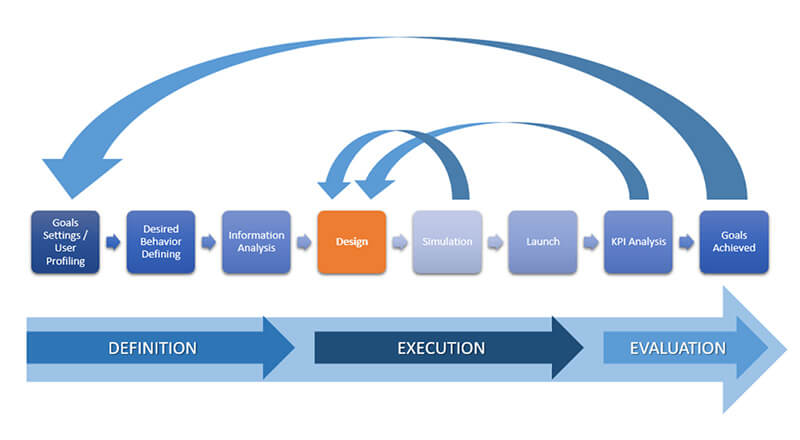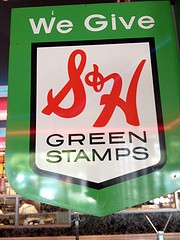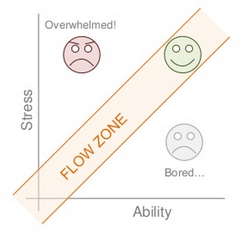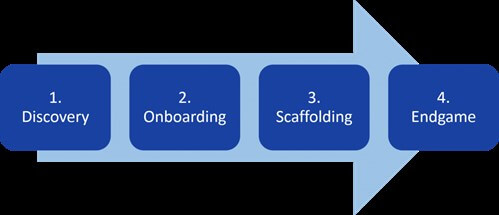When you approach a company and explain that you have Gamification knowledge, the first thing they think about is: “I am not for games”.
Actually, they are right, they are not for games and neither am I. I am about to apply #Gamification techniques to the engagement of your corporate apps.
#Gamification is an #iterative process, which requires planning, good practices in game design and a great knowledge of the business.
This diagram shows the main phases of a Gamification project

When you approach a company and explain that you have Gamification knowledge, the first thing they think about is: “I am not for games”.
First, we must be very clear in defining our project objectives:
- What do we want to achieve? When?
- What behavioral changes do we want to promote?
- What additional elements should you consider?
An example: “I want to increase the entries in the collaboration and knowledge tool by 15% in the next 3 months. I want to do this by motivating employees to contribute to the system without distracting them from their daily duties. ”
Now that we have clear objectives we must go to the next step and define what types of user or employee we want to attract. Depending on your motivation, intrinsic or extrinsic, we must apply different game mechanics. It is true that we must be aware that we will not attract 100% of the types of employees, and that we must focus efforts on the most important and representative groups for our project.
How do we know what types of employee or user we have? Wondering, not guessing. To begin with, knowing which horde we are facing, we must do some surveys where we can detect the types according to their answers.
All this we are doing in our phase of preparation of the project where we have already identified the objectives and also the types of users we have.
We lack something important, the metrics. Let’s see the current situation of our tool or app and value as far as we want to take. We said that we wanted to increase tickets by 15%, but how many tickets do I have now? Do I have an #Analytics tool that allows me to have all this information?
In our SharePoint world, there’s a lot of analytic tools as you can see on the SharePoint Dragons blog, written by Nikander & Margriet Bruggeman.
About the Author:
David Bernal Manero | Project Director at RAONA
SharePoint Evangelyst – Gamification Player – Business Analytics Guardian
David.bernal@raona.com | @davidbernalma











